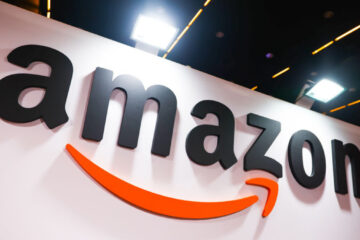On July 5, 1994, a young Princeton graduate named Jeff Bezos introduced the world to his bright idea.
Bezos, operating in a garage space of his rental home in Bellevue, Wash., initially called his company “Cadabra,” a nod to the magician’s traditional “abracadabra” incantation.
However, he reportedly ditched that moniker over concerns that it was a bit too close to the word “cadaver.”
Searching through a dictionary, Bezos settled upon “Amazon” because it was an “exotic and different” place, just as he had envisioned his company.
The entrepreneur decided to sell books online and the fledgling company sold its first book–Douglas Hofstadter’s “Fluid Concepts and Creative Analogies: Computer Models of the Fundamental Mechanisms of Thought”–on July 16, 1995.
As you are undoubtedly well aware, Amazon (AMZN) got bigger- a lot bigger. Over the years, the company moved on from books to all sorts of products and services, including Prime Video, which offers access to hundreds of TV shows and movies to over 200 million members worldwide.
The term “Amazon Effect” has become a thing, referring to the disruptive effect of e-commerce on the global retail industry.
Jeff Bezos, founder of Amazon.com
Amazon’s builds AI footprint as business grows
On July 5, 2021–the 27th anniversary of Amazon’s founding– Bezos stepped down as CEO. Today, the company he started in a garage has a market capitalization of roughly $1.9 trillion.
In February, Amazon reported that revenue jumped 14% to $170 billion in the fourth quarter from $149.2 billion a year earlier.
Related: Analyst revamps Micron price target on memory chip demand outlook
Net income rocketed to $10.6 billion, or $1 a share, from $278 million, or 3 cents a share. Strong holiday sales helped fuel the numbers.
“While we’ve made meaningful progress in our financial measures, what we’re most pleased about is the continued customer experience improvements across our businesses,” CEO Andy Jassy told analysts during the company’s earnings call.
“These results represent a lot of invention, collaboration, discipline, execution, adjusting, and reimagining from teams across Amazon,” he said.
Amazon Web Services, or AWS, revenue grew 13%, beating the 12% gains of the prior two quarters. AWS’s operating profit climbed 38%. AWS is a cloud services provider used by enterprises and governments to store and manage data. Increasingly, it’s being used by customers to train and run large language models and other AI solutions.
On March 27, Amazon said it would seek to improve its AI-related offering, spending $2.75 billion backing Anthropic, a San Francisco-based company working on generative AI. The investment follows an initial $1.25 billion Amazon put into the company in September.
Amazon is scheduled to report quarterly results later this month on April 25.
Analysts surveyed by FactSet expect the company to report earnings of 83 cents per share on sales of $142.62 billion. The company reported 31 cents a share on $127.4 billion in revenue a year ago.
Analysts see income boost in fees
Wells Fargo analyst Ken Gawrelski raised the firm’s price target on Amazon.com to $217 from $211, while keeping an overweight rating on the shares.
Gawrelski said in an investor’s note that he is also adding the stock to its Q2 Tactical Ideas List ahead of the next round of positive revisions.
More Tech Stocks:
Google fined $270 million by French regulatory authorityAnalysts revamp Nvidia price targets as Blackwell tightens AI market gripAnalysts overhaul Micron stock price target ahead of earnings
The analyst said he is raising second quarter operating income estimate by about $750 million to $14.5 billion, 15% above Wall Street, driven by the new fee structure for Fulfillment by Amazon, or FBA, where third-party sellers can automate their order fulfillment and shipping services.
Wells Fargo believes that restructured FBA fees and cost externalization driven by FBA inventory placement fees will drive $1.2 billion of incremental operating income comparable to the first quarter.
The analyst noted that his AWS checks point to continued first-quarter acceleration driven by “significantly moderating optimization, cloud migration acceleration, and GenAI workloads.”
Earlier this month, Fortune reported that the Federal Trade Commission began examining a new set of fees Amazon recently levied on U.S. merchants selling goods through its online megastore.
The FTC filed a lawsuit against Amazon in September, charging the company harmed consumers with its monopoly position in online retailing through higher prices and unfairly limiting competition by favoring its products over rival merchants.
The suit alleges that Amazon will “bury” lower-priced products deep into its search rankings, effectively making them “invisible,” while effectively conditioning sellers to obtain “Prime” eligibility for their products, which are then automatically linked to the company’s fulfillment services.
In response to the filing, Amazon said that the suit “makes clear the FTC’s focus has radically departed from its mission of protecting consumers and competition.”
Related: Veteran fund manager picks favorite stocks for 2024


